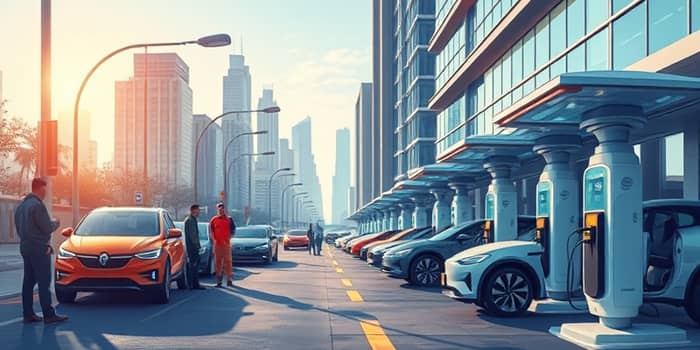
Across the globe, the automotive landscape is undergoing a profound transformation powered by electric vehicle breakthroughs. What once felt like a gradual shift has now become a full throttle race toward cleaner, smarter mobility. From bustling urban centers to emerging markets, EVs are capturing imaginations, reshaping industry strategies, and rewriting the rules of transportation.
Driven by a blend of environmental urgency, policy mandates, and cutting-edge research, manufacturers and consumers alike are embracing this new era. The momentum is palpable. Every charge cycle represents more than energy transfer—it embodies progress, ambition, and our collective future on the road.
In 2025, electric vehicles are set to account for 25 percent of all new passenger car sales worldwide. This rapid adoption rate signals a seismic shift in consumer behavior and industry focus. Lithium-ion cell capacity, key to powering this revolution, is projected to reach 3.8 TWh by year-end—approximately double what the current market demands.
Regional variations paint a diverse picture. China, commanding more than half of its new vehicle market in EVs, continues to lead with robust policy support and local manufacturing prowess. The United States, while growing more slowly at 7.5 percent market share in Q1 2025, still posted an 11.4 percent year-over-year increase in EV deliveries. Emerging economies are not far behind: affordable, locally tailored models are driving record sales across Southeast Asia, Latin America, and parts of Eastern Europe.
The competitive dynamic in the EV arena has intensified. Tesla remains a formidable force with a 43.4 percent share of new EV sales in the U.S., despite a 9 percent decline year-over-year. Traditional automakers are striking back: General Motors doubled its EV volume in Q1 2025, selling over 30,000 units and overtaking rivals like Ford and Hyundai in key segments.
Recent model introductions have reinvigorated the market. Honda and Acura unveiled new crossover EVs designed for global markets. Stellantis expanded its electric lineup with fresh offerings from Dodge, Jeep, and Fiat. Luxury brands such as Audi, Porsche, and Chevrolet launched performance-driven electric sedans and SUVs that blend innovation with heritage.
The used EV sector is also on the rise, experiencing a 32.1 percent year-over-year sales jump as of May 2025. Tesla dominates this market, capturing nearly half of all pre-owned EV transactions, while affordability and accessibility create new opportunities for budget-conscious buyers.
At the heart of EV momentum lies battery technology advancements. Manufacturers are scaling capacity and refining chemistry to deliver longer driving ranges and faster charge times. By the end of 2025, global lithium-ion battery production is expected to double, meeting the needs of passenger cars, buses, and two- and three-wheeler segments alike.
Modern electric vehicles can exceed 130 MPGe, consuming as little as 25 kWh per 100 miles. These figures translate to lower operating costs and reduced emissions, reinforcing the case for widespread adoption. Innovations in solid-state batteries, modular platforms, and vehicle-to-grid integration promise further gains in efficiency, safety, and sustainability.
For many drivers, the transition to electric mobility delivers immediate rewards:
These advantages, combined with growing public charging infrastructure and home charging solutions, are dismantling traditional barriers to EV ownership.
Despite impressive gains, the electric vehicle transition faces hurdles. Charging network gaps persist outside major cities, especially in rural and remote areas. Policy uncertainties in the U.S. could slow adoption if federal incentives are reduced. Battery raw material supply chains, particularly for lithium and cobalt, require sustainable scaling to avoid resource bottlenecks.
Competition between legacy automakers and nimble startups intensifies market volatility. Legacy brands must reinvent manufacturing processes and dealer networks, while newcomers need to prove reliability, safety, and service capabilities at scale.
Automakers, governments, and investors can seize momentum through coordinated action:
Collaboration across industry, regulatory, and financial sectors will be critical for long-term success and resilience.
The automotive sector stands at a crossroads. By 2030, the phaseout of internal combustion engines in regions like the EU and UK will propel electrification from choice to necessity. South Africa and other emerging manufacturing hubs must adapt to shifting global supply chains, positioning themselves as vital contributors to the EV ecosystem.
This moment represents more than market growth—it embodies a significant transformation in global mobility. As we accelerate into an electrified future, every stakeholder—maker, policymaker, driver—has a role to play. Together, we can ensure that this revolution not only reduces emissions but also champions equity, innovation, and sustainable prosperity for generations to come.
References













